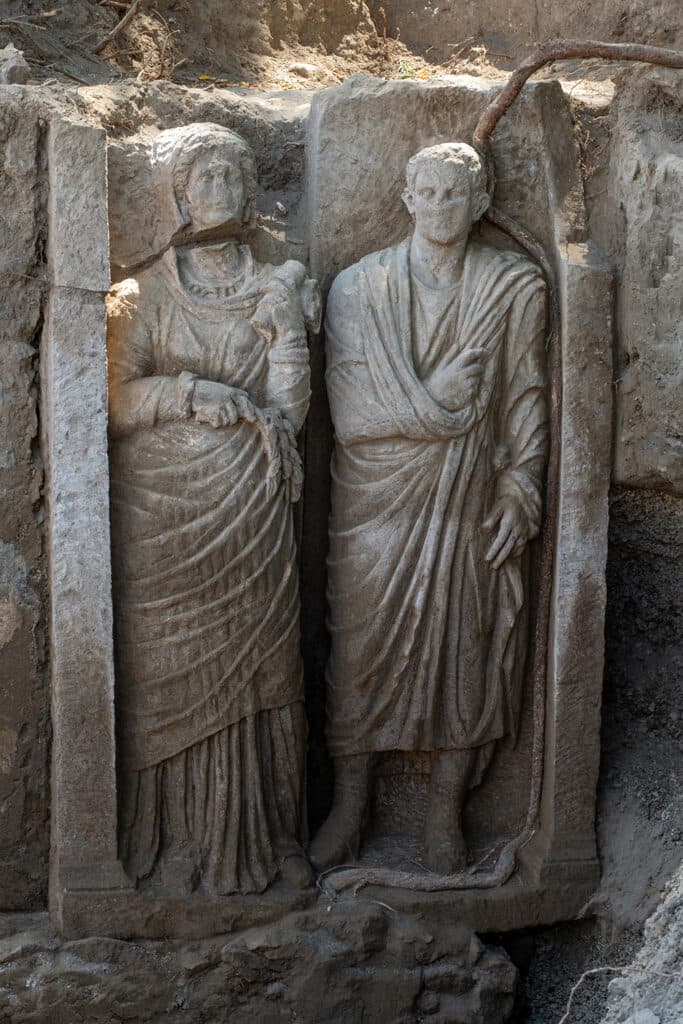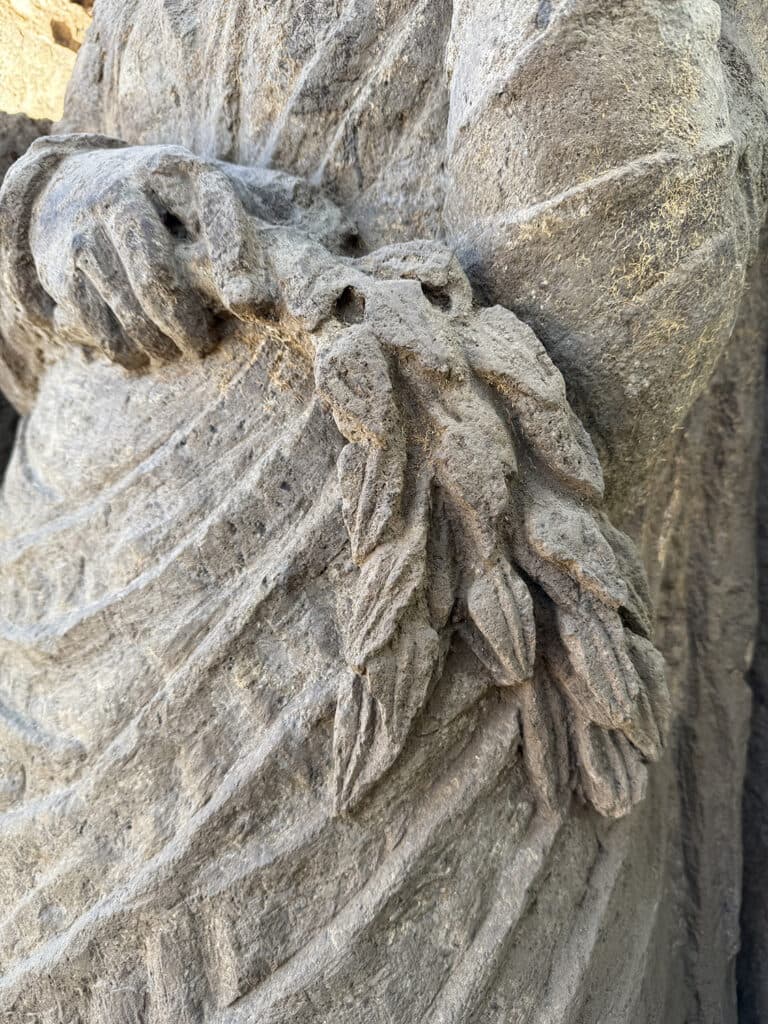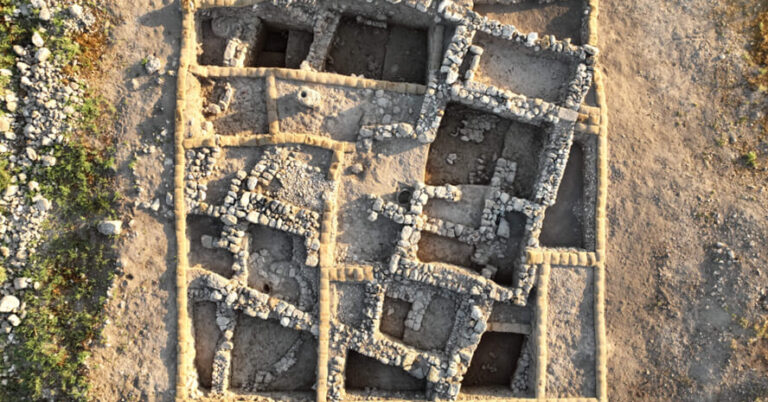A team of archaeologists has unearthed an extraordinary funerary relief in Pompeii’s Porta Sarno necropolis, featuring a nearly life-size depiction of a man and a woman. This significant find is part of the ongoing Investigating the Archaeology of Death in Pompeii project, spearheaded by the Universitat de València in collaboration with the Pompeii Archaeological Park.
Leading the project is Professor Llorenç Alapont, who underscores the importance of this discovery in shedding light on ancient funerary customs and the social identities of the deceased in the city famously buried by the volcanic eruption of Mount Vesuvius in 79 AD.

The intricately sculpted high-relief figures have been relocated to the Palaestra Grande within the archaeological site for meticulous restoration. The new discovery will take center stage in the upcoming exhibition, Being a Woman in Ancient Pompeii, set to open on April 16, 2025. Notably, visitors to the exhibition will have a unique opportunity to witness the restoration process in real time as part of the display.
Excavations at the site commenced in July 2024, though the area had previously undergone archaeological investigations in the 1990s during the installation of a second track for the Circumvesuviana railway line. A significant excavation campaign in 1998 revealed over 50 cremation burials, marked by stelae and monumental funerary structures, including a prominent funerary arch.
Recent research has identified a grand tomb consisting of a large wall with multiple niches. Atop this structure, the newly discovered relief prominently features a man and a woman, suggesting they held a notable social standing in Pompeian society.

One of the most intriguing elements of the discovery is the symbolic imagery accompanying the female figure, which hints at her possible role as a priestess of Ceres, the Roman goddess of agriculture and fertility. This detail provides valuable insight into her potential religious significance within the community.
Artistic analysis dates the relief to the late Republican period (roughly 133-27 BC), a crucial era in Roman history when elite families reinforced their status through imposing funerary monuments.
The excavation brings together experts from multiple disciplines, including archaeologists, architects, restorers, and anthropologists, to meticulously document and analyze the findings. Their initial assessments and interpretations have been published in the E-Journal of the Excavations of Pompeii, where Alapont and his team explore the identities of the figures depicted and the broader funerary context of the site.




